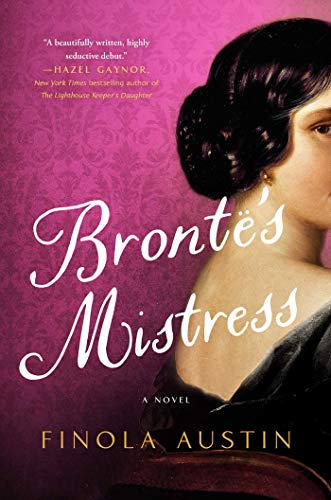Bronte’s Mistress: A Novel
Critics have long argued that the iconic novels of Charlotte, Emily, and Anne Brontë are best understood against the descent into alcoholism and opium addiction of their adored brother Branwell, who remained desperately in love with the wife of his former employer even after he was dismissed from his post as her son’s tutor in 1845. While his sisters rose to fame, Branwell drank and drugged himself to death while publicly mourning the loss of his lover, likely providing the inspiration for the troubled heroes in his siblings’ stories.
Who was the woman that drove Branwell to such depths of despair? Brontë’s Mistress takes a closer look at the woman he hoped to make his wife. Lydia Robinson was fifteen years older than Branwell and surprised and shocked him when she refused to marry him after her husband’s death. Austin portrays Lydia as a clever, fiercely desiring, and modern-thinking woman, who suffers from the stifling moral thinking of her age, which condemned passionate women as whores, and for whom Branwell is her only chance of an intellectual and sexual escape.
As I read Lydia’s story—rendered in elegant, sensuous language by Austin—it occurred to me that she might be a kind of female Rochester, an intelligent and deeply feeling person forced to endure a marriage to a highly incompatible partner. But while salvation awaits Rochester in the person of Jane Eyre, Branwell is hardly the man to liberate and sustain Lydia. Will she find a better person to love, or will she emulate Branwell’s sisters, stay chaste, and turn to writing? The novel offers some intriguing answers to these interesting questions, but not in the way the reader might have expected. A surprise waits for us at the end. Highly recommended.










